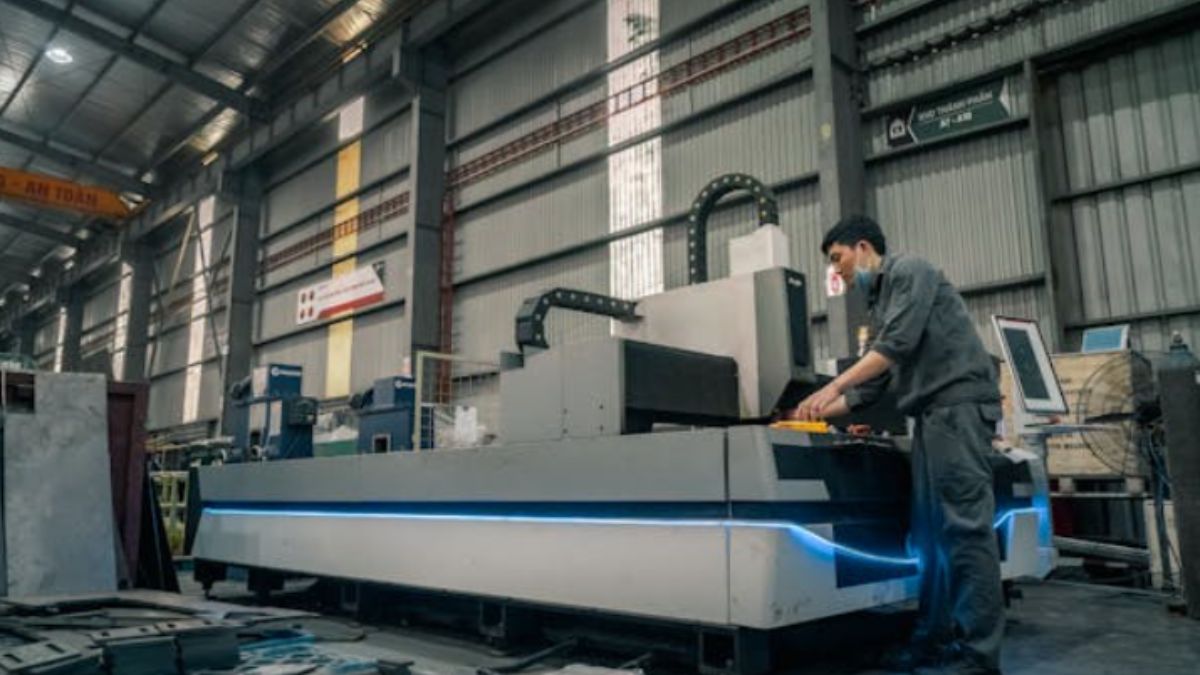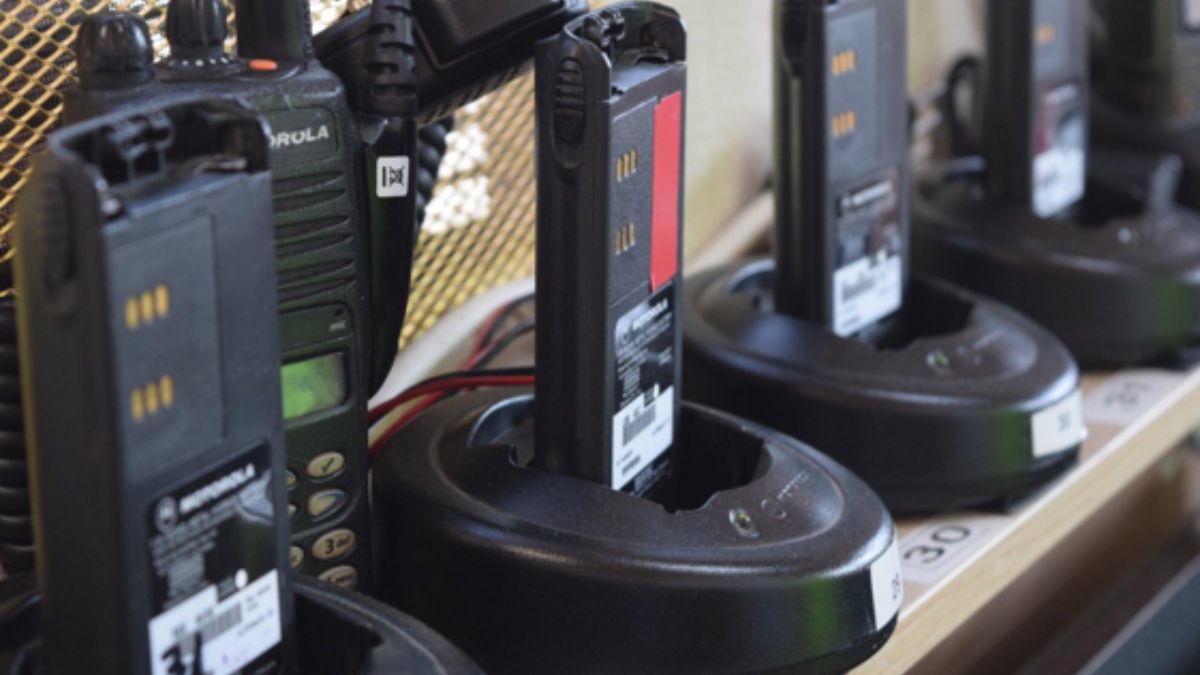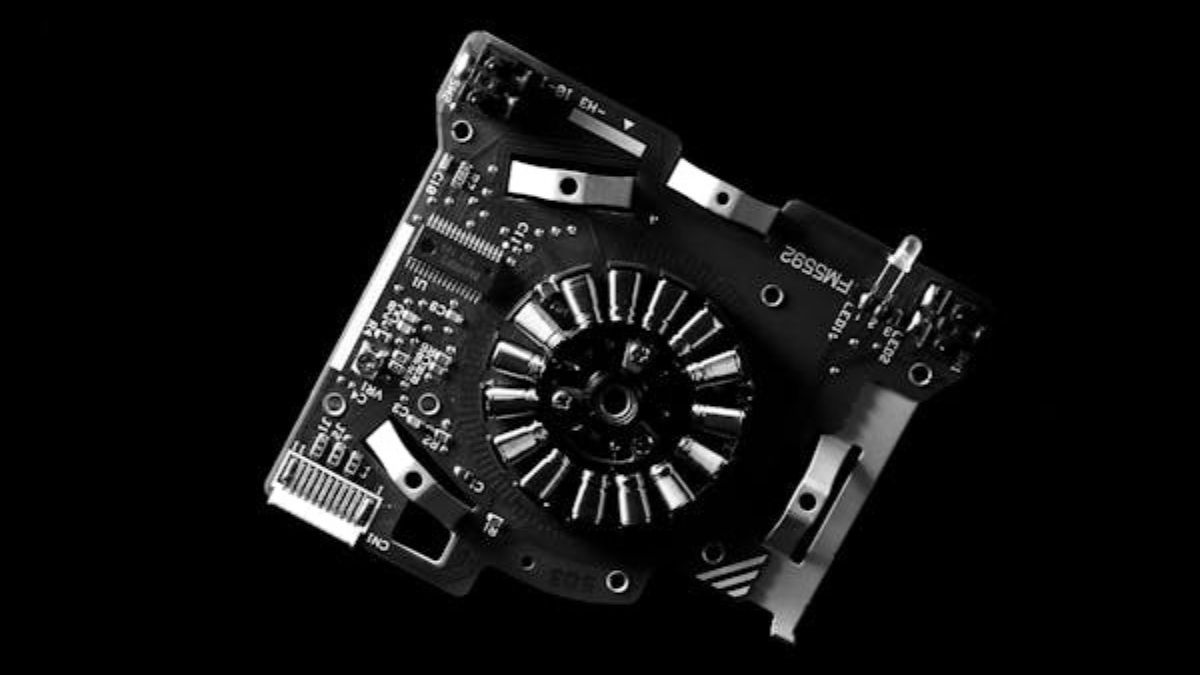AUTOMOBILES
Wireless Meat Thermometer: Cook Delicious Meals Every Time

Cooking a perfectly juicy steak, tender chicken, or a sumptuous roast often feels like a daunting task. You may find yourself constantly checking the oven, opening the grill, or slicing into the meat to ensure it’s cooked to your liking.
This not only disrupts the cooking process but often results in dry or undercooked meals. Enter The ThermoPro Twin TempSpike Truly Wireless Meat Thermometer a game-changing kitchen gadget that ensures your meals are cooked to perfection every time.
This revolutionary tool has become a must-have for home cooks and professional chefs alike, promising precise temperature readings without the hassle of wires. Whether you’re preparing a family dinner, hosting a barbecue, or experimenting with gourmet recipes, a wireless meat thermometer can elevate your cooking experience.
In this comprehensive guide, we’ll explore the features, benefits, and uses of wireless meat thermometers and how they help you master the art of cooking.
What is a Wireless Meat Thermometer?
A wireless meat thermometer is a device designed to monitor the internal temperature of food particularly meats while they cook. Unlike traditional thermometers that require you to stand over the stove or grill, these devices allow you to monitor temperatures remotely. They consist of two main components:
Probe(s): Inserted into the meat, the probe measures the internal temperature.
Receiver/Smart Device Connectivity: Receives data from the probe and displays the temperature in real-time. Modern versions often connect to smartphones or tablets via Bluetooth or Wi-Fi, giving you the freedom to move around while keeping track of your cooking progress.
Why You Need a Wireless Meat Thermometer
1. Precision Cooking
Cooking meat to the right temperature is crucial not just for taste but also for food safety. Undercooked meat can harbor harmful bacteria, while overcooked meat can be tough and unappetizing. A wireless meat thermometer takes the guesswork out of cooking by providing precise temperature readings, ensuring your food is cooked safely and to perfection.
2. Convenience and Freedom
With a wireless thermometer, you no longer need to hover around the kitchen. The ability to monitor your food from your smartphone means you can entertain guests, set the table, or even relax while your meal cooks. Many thermometers offer alerts to notify you when the meat reaches your desired temperature.
3. Versatility
Wireless meat thermometers are not limited to grilling or roasting. They can also be used for baking, sous vide cooking, frying, and even monitoring the temperature of liquids like soups and sauces.
4. Enhanced Cooking Skills
For budding chefs, a wireless meat thermometer is an excellent learning tool. It helps you understand how different meats respond to varying temperatures and cooking methods, enabling you to experiment confidently.
Features to Look for in a Wireless Meat Thermometer
When shopping for a wireless meat thermometer, consider the following features:
1. Range
Depending on your cooking setup, you may need a thermometer with a long-range connection. Some models offer ranges up to 300 feet, ideal for backyard grilling or larger kitchens.
2. Temperature Accuracy
Accuracy is non-negotiable. Look for thermometers with a small margin of error (±1°F) to ensure your food is cooked precisely.
3. Number of Probes
Multi-probe thermometers are perfect for cooking different types of meat simultaneously or monitoring multiple areas of a large cut.
4. App Integration
Many wireless thermometers come with companion apps that offer pre-set temperature guides for various meats, cooking tips, and customizable alerts.
5. Durability and Design
Choose a thermometer with heat-resistant probes and a durable design that can withstand the rigors of regular cooking.
6. Battery Life
A thermometer with a long battery life ensures uninterrupted monitoring during extended cooking sessions.
How to Use a Wireless Meat Thermometer
- Insert the Probe: Place the probe into the thickest part of the meat, avoiding bones or fat for the most accurate reading.
- Connect to the Receiver or App: Pair the thermometer with your smartphone or the included receiver.
- Set Desired Temperature: Use the app or device to select the desired doneness level or temperature.
- Monitor Cooking Progress: Track the temperature in real-time. Many thermometers will alert you when the food reaches the target temperature.
- Rest and Serve: Once the meat is done, allow it to rest before slicing to ensure the juices redistribute evenly.
Top Dishes You Can Perfect with a Wireless Meat Thermometer
1. Steak
Achieve the perfect medium-rare steak by cooking it to 130°F, or go for medium at 140°F. A wireless thermometer ensures you hit the mark every time.
2. Roast Chicken
For a succulent roast chicken, aim for an internal temperature of 165°F. The thermometer eliminates the risk of dry or undercooked poultry.
3. Pork Tenderloin
Pork can quickly go from juicy to dry. With a target temperature of 145°F, you can ensure a tender, flavorful result.
4. Smoked Brisket
Low and slow cooking demands precision. Use your thermometer to maintain an ideal smoking temperature and monitor the brisket’s internal temperature for melt-in-your-mouth goodness.
Caring for Your Wireless Meat Thermometer
To ensure your thermometer lasts, follow these maintenance tips:
- Clean the Probes After Each Use: Wipe with a damp cloth and avoid submerging in water unless specified.
- Store Properly: Keep the thermometer and probes in their designated storage case to prevent damage.
- Replace Batteries: Regularly check and replace batteries to avoid interruptions during cooking.
Recommended Wireless Meat Thermometer Brands
1. MEATER Plus
Known for its sleek design and long-range Bluetooth connectivity, MEATER Plus offers a user-friendly app and accurate readings.
2. ThermoPro TP25
This thermometer features four probes, an intuitive app, and excellent range, making it ideal for multitasking chefs.
3. Inkbird IBT-4XS
Affordable yet reliable, the Inkbird model provides Bluetooth connectivity, accurate readings, and a durable design.
Final Thoughts
A wireless meat thermometer is more than just a kitchen gadget it’s a tool that brings confidence, precision, and creativity to your cooking. By taking the guesswork out of temperature monitoring, it allows you to focus on flavor, presentation, and enjoying the cooking process.
Whether you’re a seasoned chef or a home cook, investing in a high-quality wireless meat thermometer is a decision you’ll never regret. With this handy device, you’ll transform your culinary skills and consistently serve delicious meals that delight family and friends. Cook smarter, not harder, and let a wireless meat thermometer guide you to perfection every time!
AUTOMOBILES
Claims Automation and Regulatory Compliance: Best Practices

The insurance sector is undergoing rapid transformation, driven by technological innovation and growing customer expectations. Among the most significant developments is the adoption of automation in processing insurance claims. Automating claims not only improves operational efficiency but also enhances customer satisfaction by accelerating turnaround times. However, as companies adopt these technologies, staying aligned with regulatory standards remains a crucial concern. Balancing speed with compliance is essential, and best practices can ensure insurance providers achieve both effectively.
One of the primary advantages of insurance claims automation is the ability to streamline traditionally manual tasks such as data entry, claim validation, and payment processing. Automation allows insurers to handle higher claim volumes with fewer errors, significantly reducing operational costs and minimizing fraud risks. The use of digital tools, including AI and machine learning, also enables better decision-making by flagging suspicious claims and identifying trends that require human intervention. As these technologies evolve, insurers can focus more on customer care and less on paperwork, driving greater efficiency across the board.
Despite these benefits, automation must operate within the boundaries of strict regulatory frameworks. Insurance is a highly regulated industry, with federal and state laws guiding data privacy, fair treatment, and accurate reporting. Failing to meet these standards can result in hefty penalties and damage to reputation. Therefore, it is vital for insurance providers to ensure their automated systems are built with compliance in mind from the start. Regulatory considerations should not be an afterthought—they must be integrated into the design and deployment of every automated workflow.
A key best practice in this context is implementing transparent audit trails. Automated systems must maintain clear records of every action taken during the claims process. This not only supports internal reviews and quality control but also simplifies external audits by regulatory bodies. Ensuring data accuracy and accessibility also helps insurers maintain trust with both regulators and customers. Audit trails can be particularly helpful when resolving disputes, as they provide a detailed account of every interaction.
Another important aspect of insurance claims automation is data protection. With claims processing relying heavily on personal and financial information, compliance with laws such as the Health Insurance Portability and Accountability Act (HIPAA) and the Gramm-Leach-Bliley Act (GLBA) is non-negotiable. Automated systems must include strong encryption protocols, access controls, and monitoring mechanisms to guard against unauthorized access or data breaches. Regular system assessments and updates are also recommended to keep up with evolving security threats.
Collaboration between compliance officers, IT teams, and operations staff is essential to align automation with regulatory expectations. Before deploying any automation solution, stakeholders should conduct a comprehensive risk assessment and map out all potential compliance pitfalls. This proactive approach allows companies to embed safeguards into the process rather than relying on post-deployment fixes. Training employees on the limitations and oversight of automation tools can also help in maintaining a compliant environment.
Flexibility is another best practice when integrating automation in claims processing. Regulations can change over time, and automated systems must be adaptable enough to accommodate new rules without requiring a complete overhaul. Configurable workflows and modular software architectures enable quick updates while maintaining system integrity. Additionally, insurers should prioritize solutions that offer rule-based engines, allowing quick alignment with jurisdiction-specific compliance requirements.
Furthermore, regular compliance audits and real-time monitoring are key to ensuring long-term adherence. By setting up alerts for anomalies or deviations from standard procedures, insurers can catch issues early and make necessary corrections. Establishing a feedback loop between automated systems and compliance teams ensures continuous improvement and minimizes the risk of non-compliance.
Customer communication also plays a vital role. Automated claims processes must be transparent and easily understandable. When customers receive clear explanations about decisions and timely updates, it builds trust and reduces the likelihood of disputes. Including a human review option in complex cases adds another layer of credibility and ensures fair treatment, which regulators look upon favorably.
In conclusion, automating insurance claims holds immense promise for streamlining operations, improving accuracy, and enhancing customer satisfaction. However, these advantages must be pursued alongside a strong commitment to regulatory compliance. By adopting best practices such as transparent audit trails, strong data protection measures, cross-functional collaboration, and system flexibility, insurance providers can create a future-ready claims process that is both efficient and compliant. As technology continues to evolve, staying ahead of regulatory expectations while delivering seamless service will define the success of insurance automation initiatives.
AUTOMOBILES
Using Two-Way Radios to Enhance Workplace Safety

Do you want a faster way to keep your team safe at work? Two-way radios help workers talk quickly during emergencies or daily tasks.
Clear communication can stop accidents and save time. These radios are easy to use and work in many settings. From construction sites to warehouses, they keep everyone connected.
Want to know how they can make your workplace safer? Keep reading to learn more.
Talk in Real Time
Workers can speak to each other right away with two-way radios. There is no need to dial numbers or wait for a response. This helps save time during busy or dangerous moments. A quick warning can stop an accident before it happens. Everyone hears the message at the same time.
This keeps the whole team alert and ready. Clear updates can be shared within seconds. It also helps when workers are far from each other. Fast talking means fast action. This real-time tool makes the job site safer for all.
Respond to Danger Fast
Two-way radios let workers call for help right away. In case of fire or injury, every second counts. A quick alert can prevent the danger from spreading. Team members can hear the warning and act fast. Supervisors can send help without delay.
This fast action can save lives and protect property. Radios work even when phones fail or lose signal. They are made for use in loud or rough areas. One button can connect to the whole team. Quick response means safer workplaces every day.
Stay Connected Anywhere
Two-way radios work in places where phones may not. They can send signals through walls, tunnels, and wide spaces. This makes them great for factories, construction sites, and large buildings. Workers can talk to each other no matter where they are. Even in remote areas, radios help teams stay in touch.
Strong signals mean fewer lost messages. Everyone stays informed at all times. It’s easier to share updates and warnings right away. This connection keeps the team safe and on track. No matter the location, safety communication stays strong.
Cut Down on Risks
Clear messages help stop small problems from becoming big ones. Workers can report hazards before someone gets hurt. Quick updates keep everyone alert and aware. Misunderstandings are less likely when communication is direct. Radios make it easy to follow safety steps.
Teams can warn each other about moving equipment or spills. Fewer delays mean fewer chances for mistakes. Managers can check in without leaving their post. Fast talk leads to fast action during risky jobs. This simple tool helps keep everyone safer every day.
Work Smarter Together
Team members can share updates fast using two-way radios. Everyone knows what to do and when to do it. This helps avoid confusion and wasted time. Tasks get done faster when workers stay in touch. It also helps teams work safely in busy areas. When people talk clearly, mistakes happen less often.
Radios help leaders guide teams from anywhere on site. Good tools make good teamwork possible. You can find reliable options like ICOM Land Mobile Radios for sale here to improve your team’s safety and communication.
Learn More About Workplace Safety
Keeping the workplace safe protects everyone. Simple tools like two-way radios can make a big difference.
Fast communication helps stop accidents before they happen. When workers feel safe, they do their jobs better. Safety should always be part of the plan.
Looking for more tips and ideas? We’ve got you covered. Check out some of our other posts now.
AUTOMOBILES
The Importance of High-Quality PCB Design in Modern Electronics

Introduction
The intricate world of electronics forms the fabric of our modern lives, influencing nearly every sphere, from personal entertainment to industrial operations. At the heart of these powerful devices lies a fundamental component—the printed circuit board (PCB). Often overshadowed by the more conspicuous components it supports, the PCB is nonetheless the unsung hero of contemporary electronics, serving as the bedrock for functionality and innovation. High-quality PCB design is a pivotal factor in determining electronic device performance, overall reliability, and efficiency. Our exploration into the critical nature of PCB design will highlight its profound impact on the flourishing landscape of modern technology.
Foundation of Modern Electronics
PCBs provide the foundational framework essential for mounting and interconnecting electronic components in an organized manner. They are the linchpins that transform a medley of components into cohesive, functional systems. By hosting intricate networks of electrical pathways, PCBs ensure precise energy transmission among the elements, which is necessary for the devices to perform as intended. Modern advances have allowed for sophisticated design practices, like those utilized in hubs renowned for cutting-edge design, such as Orcad Design New York. These advancements have empowered engineers to create highly efficient boards, supporting compact and increasingly powerful technology, which is central to the development of our tech-driven world.
Impact on Performance and Reliability
The performance grade of electronic devices hinges upon the quality of their PCB design. A meticulously crafted PCB ensures optimal performance by facilitating seamless electrical flow and minimizing resistance and interference. This precision enhances device responsiveness and processing speeds, translating into a superior user experience. Equally important is the board’s role in ensuring reliability; by reducing risks of defects and breakdowns, high-quality PCBs extend device life and maintain consistent operation. Additionally, by engineering for minimal electromagnetic interference, designers ensure that devices operate without unexpected disruptions, thus fostering consumer trust and confidence in these devices.
Contribution to Energy Efficiency
In today’s eco-conscious era, energy efficiency is paramount for technology developers. Electronic devices with poorly designed PCBs can lead to significant energy loss, increasing operational costs and contributing to environmental degradation. High-quality PCB designs mitigate energy wastage through optimized layouts that streamline power distribution and minimize power dissipation. Such thoughtful design is especially critical in devices reliant on batteries, where energy efficiency directly correlates with prolonged usage times and enhanced consumer satisfaction. Thus, sophisticated PCB design contributes substantially to developing eco-friendly devices, aligning technological advancement with sustainable practices.
Role in Miniaturization and Complexity
The demand for smaller, more powerful electronics is a driving force behind current technological innovation. PCBs are pivotal in this miniaturization trajectory, enabling designers to pack complex functionalities into increasingly diminutive forms without sacrificing performance. Advanced techniques like multilayer boards and surface mount technology have revolutionized space utilization, allowing for the densification needed to fit more power into smaller devices. This capability is crucial in consumer electronics and aerospace sectors, where space and weight constraints necessitate highly efficient design. Through this lens, we appreciate the transformative role high-quality PCB design plays in facilitating complexity and evolutionary leaps in technology.
Enhancing User Experience
User experience is a focal point in modern electronics development, and high-quality PCBs directly influence this aspect by ensuring devices operate smoothly and efficiently. Fast, reliable devices with infrequent glitches heighten user satisfaction and brand loyalty. Moreover, the move towards sleek, lightweight, and aesthetically pleasing designs is partly driven by advancements in PCB design. By enabling slimmer profiles and reducing the need for bulky external features, modern PCBs align technological capability with consumer desires for portability and style. This synergy between function and form is instrumental in creating products that meet and exceed user expectations, solidifying the device’s role in everyday life.
Influence on Technological Advancements
PCBs catalyze innovation, forming the basis upon which cutting-edge technologies like artificial intelligence, advanced communications, and the Internet of Things (IoT) are integrated into everyday devices. By enabling seamless operation and integration, high-quality PCB designs ensure these technologies are not only accessible but also practical for widespread use. As pioneers in these fields continue to push boundaries, the adaptability and foresight embedded in meticulous PCB planning are crucial in maintaining the momentum of technological progress. This dynamic foundation ensures we keep pace with and actively shape the future, empowering industries and individuals with tools that enhance and expand capabilities.
Conclusion
The critical importance of high-quality PCB design in modern electronics is abundantly clear. As the backbone of all electronic devices, a well-designed PCB encapsulates the intersection of innovation and reliability, driving advancements and ensuring sustainable, powerful performance. By committing to excellence in PCB design, developers are poised to successfully navigate the challenges and opportunities of a rapidly evolving technological landscape, crafting devices that define and improve the modern experience. As we look to a future driven by technological innovation, the PCB will continue to stand as an irreplaceable element, underscoring the profound impact of quality design on the electronic devices that shape our world.
-

 HEALTH1 year ago
HEALTH1 year agoIntegrating Semaglutide into Your Weight Loss Plan: A Practical Guide
-

 HOME IMPROVEMENT2 years ago
HOME IMPROVEMENT2 years agoHow to Choose the Perfect Neutral Area Rug for Every Room
-

 LAW1 year ago
LAW1 year agoTeenage Drivers and Car Accidents in California: Risks and Parental Liability
-

 LAW1 year ago
LAW1 year agoPost-Divorce Considerations in California: Modifications and Long-Term Planning
-

 CONSTRUCTION1 year ago
CONSTRUCTION1 year agoConstruction Site Safety Regulations in New York and Your Rights as a Worker
-

 HOME1 year ago
HOME1 year agoSandra Orlow: The Teen Model Who Captivated the Internet
-

 FINANCE1 year ago
FINANCE1 year agoDigital Asset Management in Florida Estate Planning
-

 LAW1 year ago
LAW1 year agoKentucky’s School Football: Concussions, Injuries, and Legal Options
